No-Sew Face Masks: How to Make a Cloth Mask With a Bandana
Here's our step-by-step guide to DIY cloth masks without a sewing machine.
Updated April 27 2020, 2:25 p.m. ET
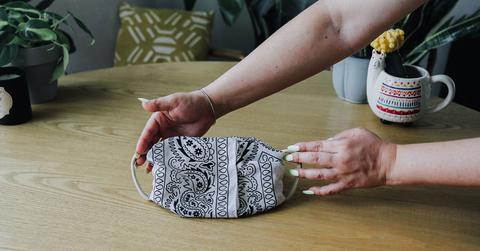
The CDC is officially recommending Americans wear cloth face masks anytime they go out in public, especially in states with high transmission rates. Of course, wearing a mask alone will not protect you from COVID-19 — you still need to practice safe social distancing and hygiene measures — but it serves as an added layer of protection, primarily for those around you, since there are so many asymptomatic, undiagnosed cases of the coronavirus. And fortunately, it’s pretty easy to make a face mask with no sewing machine, using just a bandana and elastics.
When it comes to procuring a cloth mask, there are a few options. If you have a sewing machine (or are skilled with a needle and thread), you can sew a cloth face mask for yourself. You can also buy a cloth face mask from a small business, many of which have pivoted their operations to mask-making. But in the meantime, you can make a DIY face mask in under a minute. It may not be as secure or effective as a sewn mask, but it’s a decent option for anyone who doesn’t sew, is unable to purchase a mask, or needs to go in public unexpectedly — plus, it's a zero-waste option, since you'll be using materials you already have at home.
You can make a no-sew face mask without a sewing machine.
There are endless ways to make yourself a cloth face mask — but the way detailed below takes less than a minute, requires no sewing at all, and uses materials you already have at home.
These are the best materials for DIY face masks.
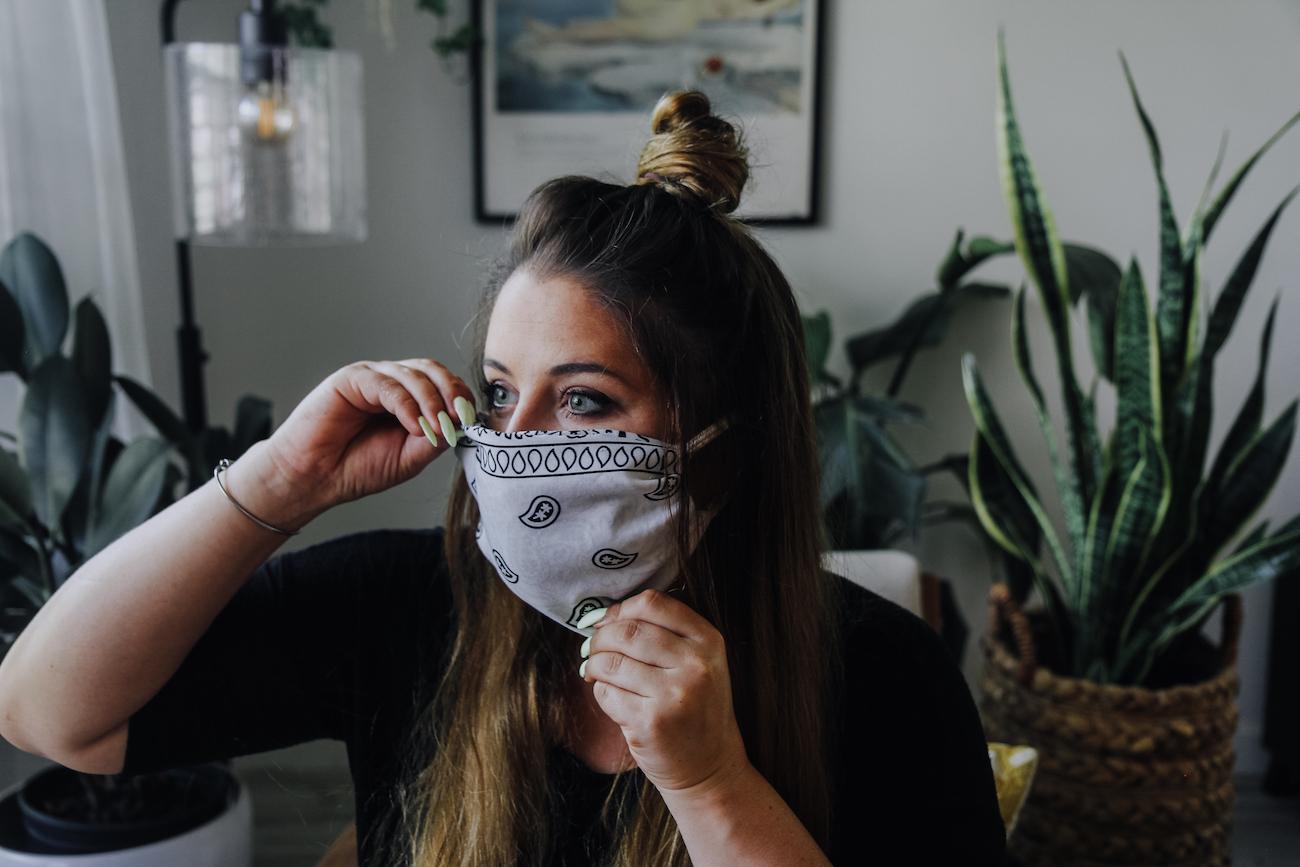
Dr. Scott Segal of Wake Forest Baptist Health recently studied the efficacy of homemade masks. He told The New York Times that the best fabric for DIY face masks is one with a denser fabric weave (woven materials with smaller holes) and thick material. You can check how dense your fabric is by holding it up to the light — the less light that passes through, the better.
The best option is quilter’s cotton, according to Segal. If you don’t have quilter’s cotton, an everyday bandana, tea towel, or old T-shirt (just cut off everything above the armpits to make your fabric a rectangle or square) will work, too.
No matter what fabric you use, it’s recommended to layer it at least four times over, which will help filter out more particles.
Here’s how you can make a face mask without a sewing machine.
Follow the below instructions step-by-step to make your own face mask in less than a minute.
1. Gather materials to make your face mask:
- Cotton cloth (a bandana, tea towel, or any square or rectangular fabric of similar size)
- Two hair ties or rubber bands (if you don’t have any, you can cut the top off an old sock or pair of tights to create two round pieces of elastic)
- Coffee filter (the CDC recommends this as an optional addition)
- Scissors (if your cloth is too large)
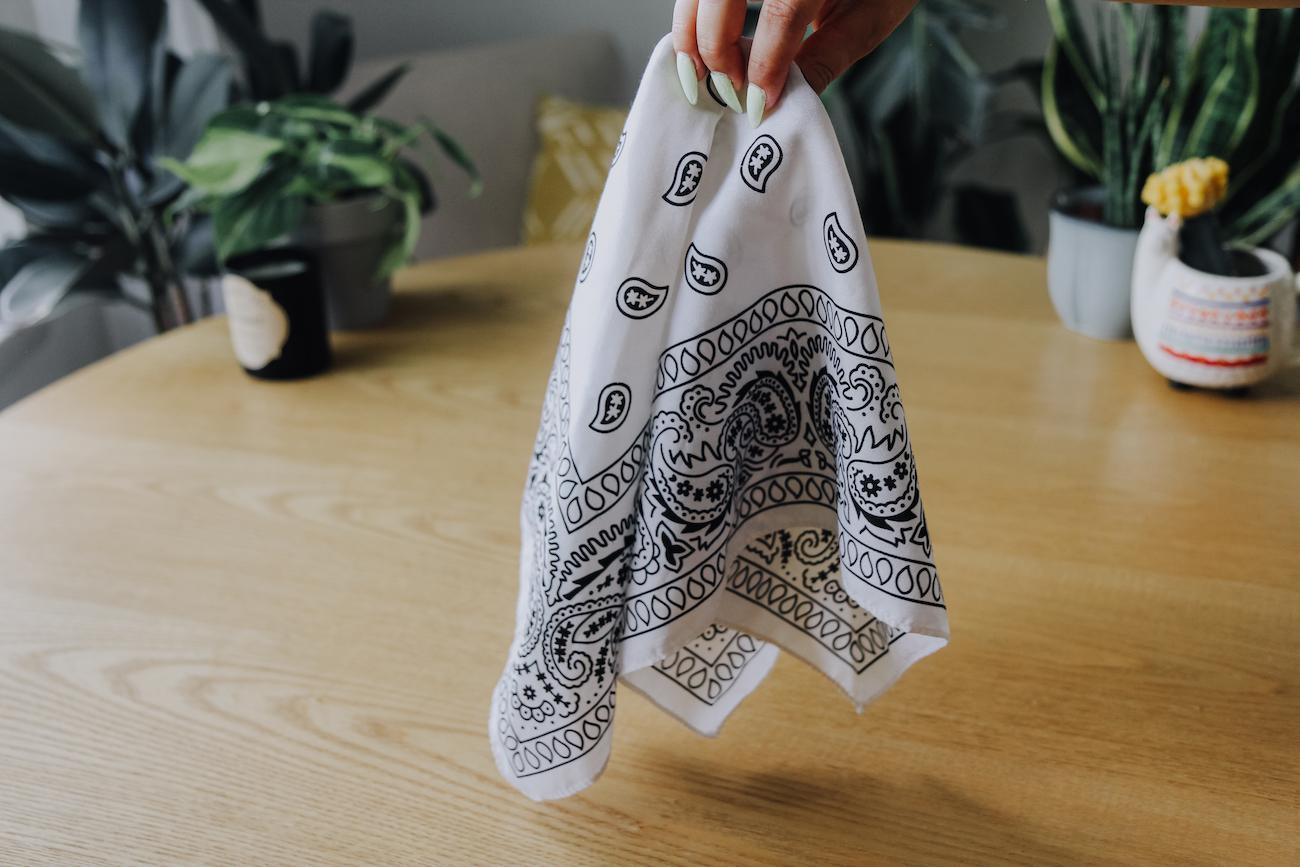
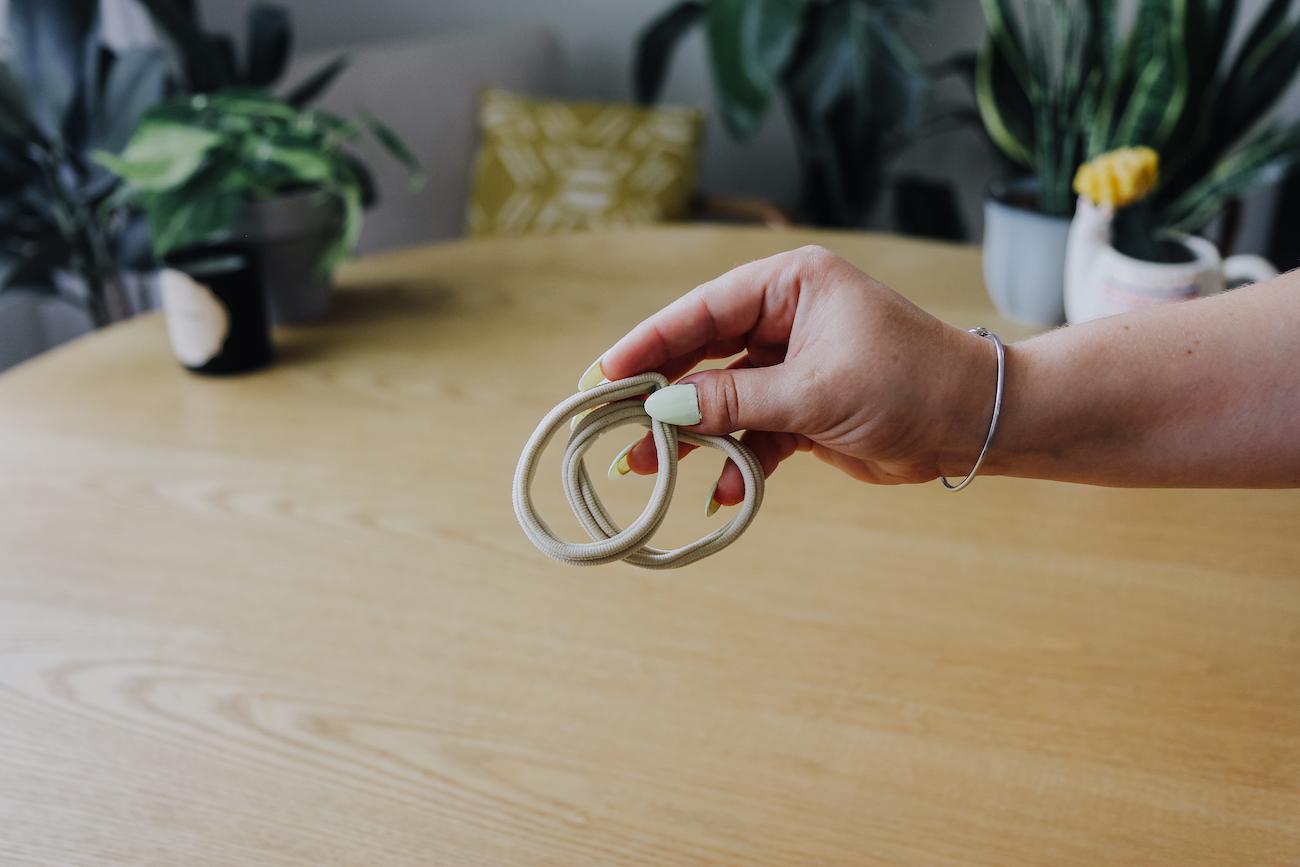
2. Lay the bandana or fabric flat.
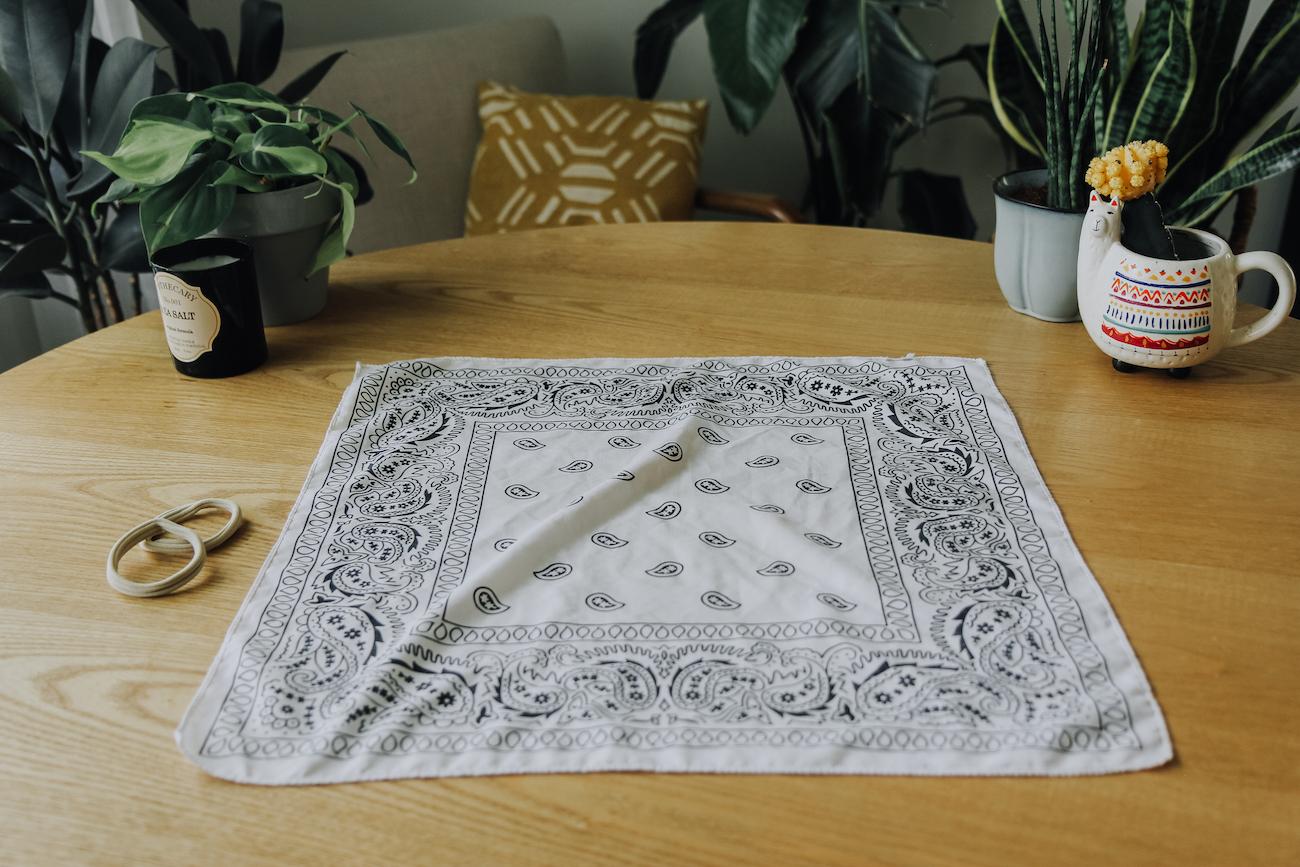
3. Fold
Keeping the bandana about 6 inches tall (don’t worry about the width just yet), fold it over evenly, at least three times, creating four layers of fabric. If you are using a coffee filter, place it inside the center of your mask.
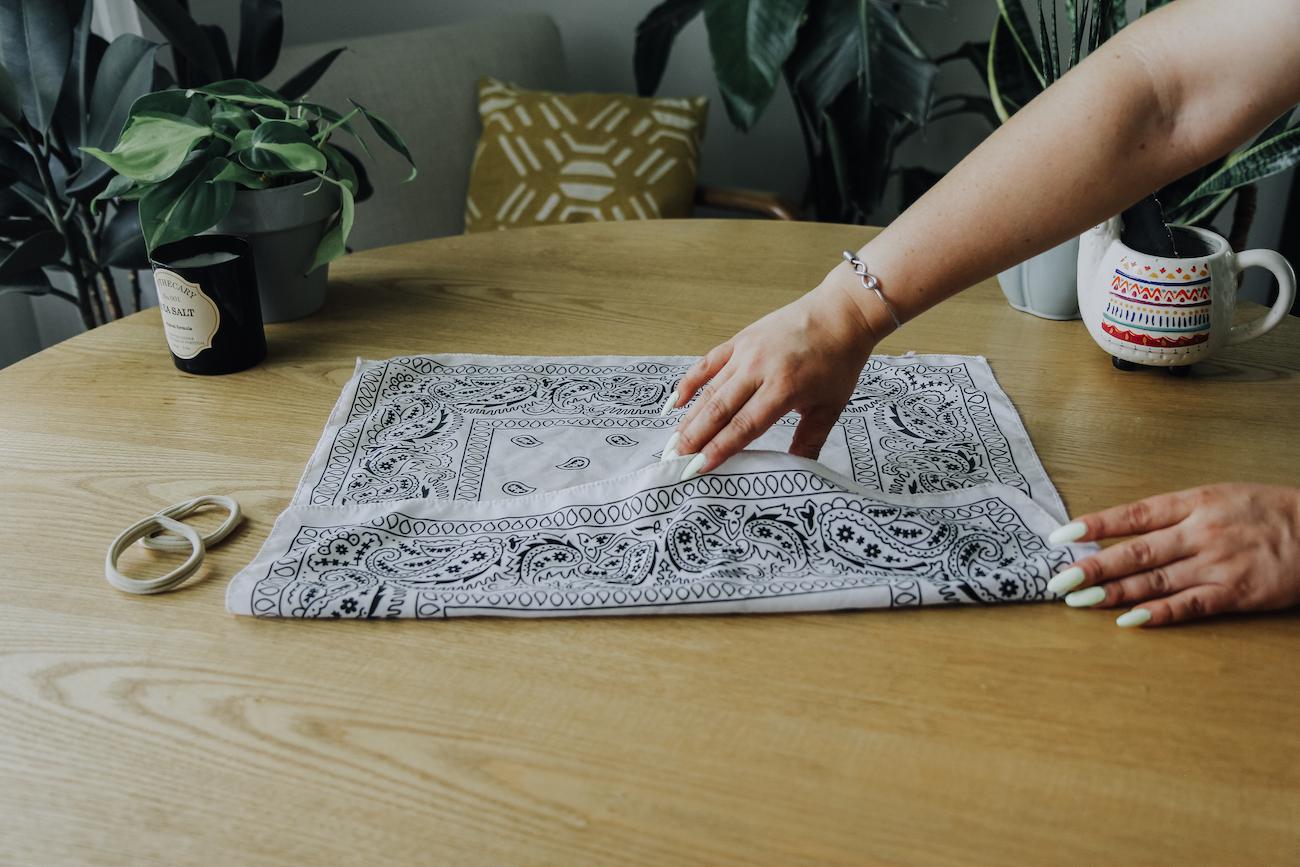
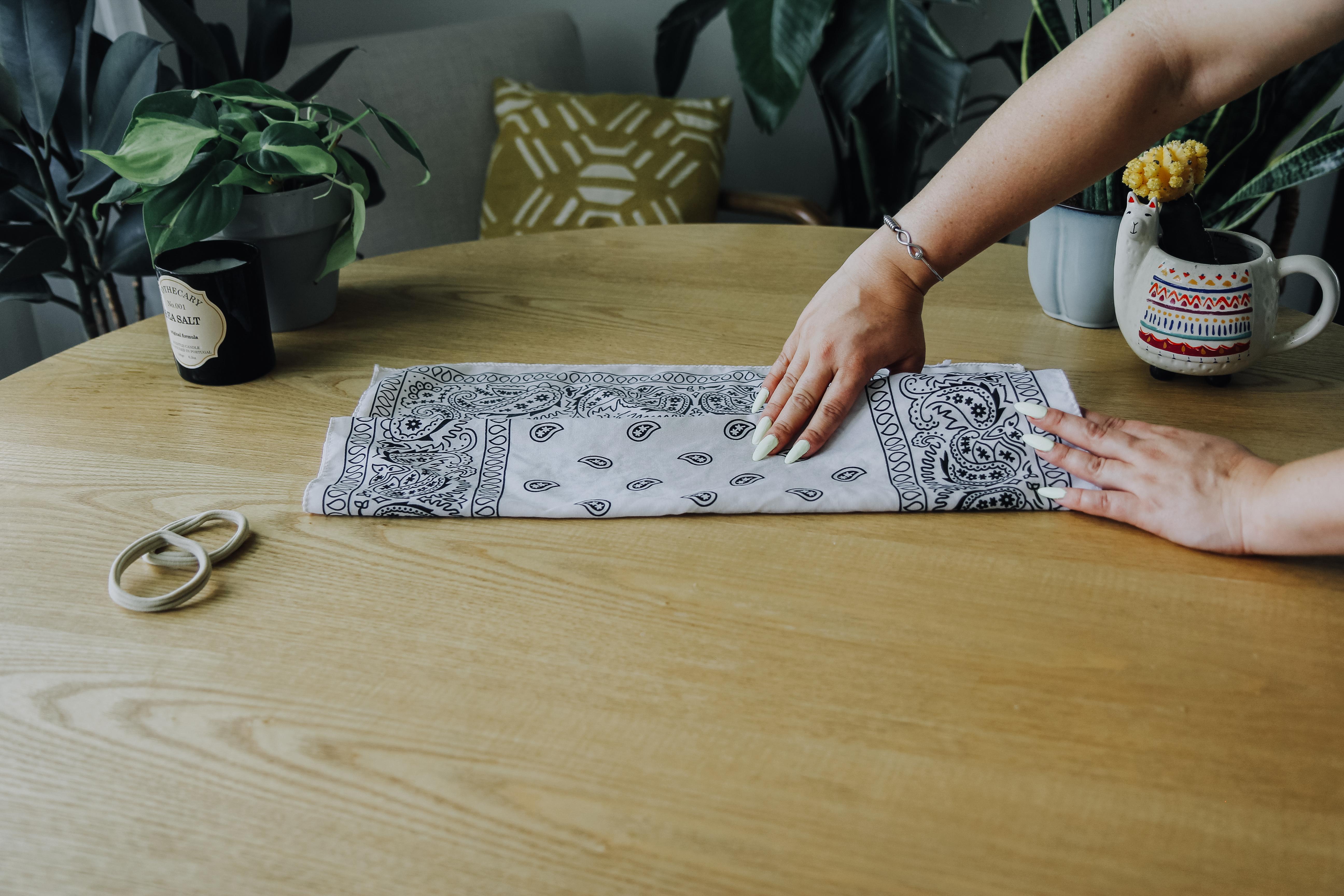
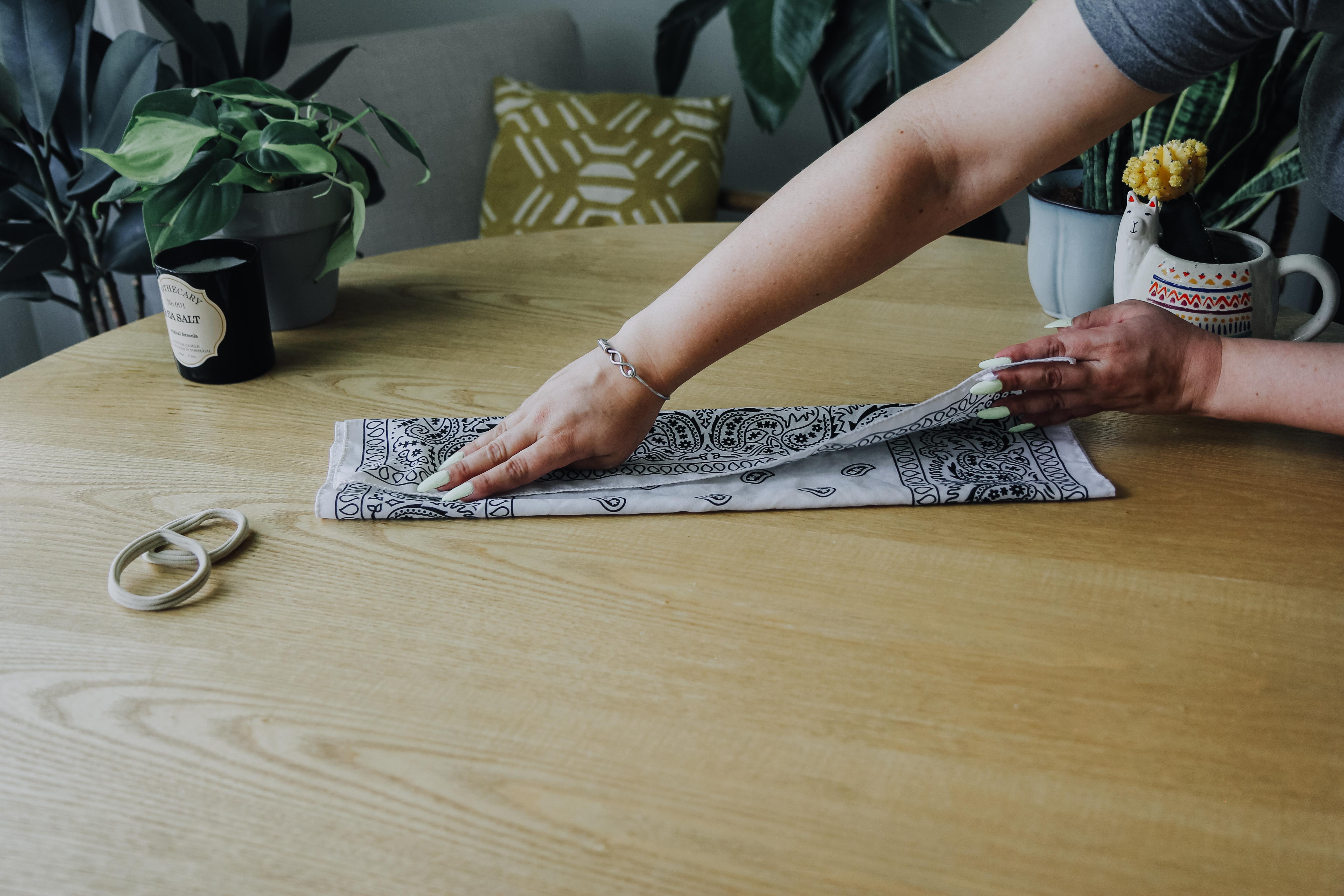
4. Add elastics
Pull each elastic onto the bandana, leaving 10 inches of fabric centered between them.
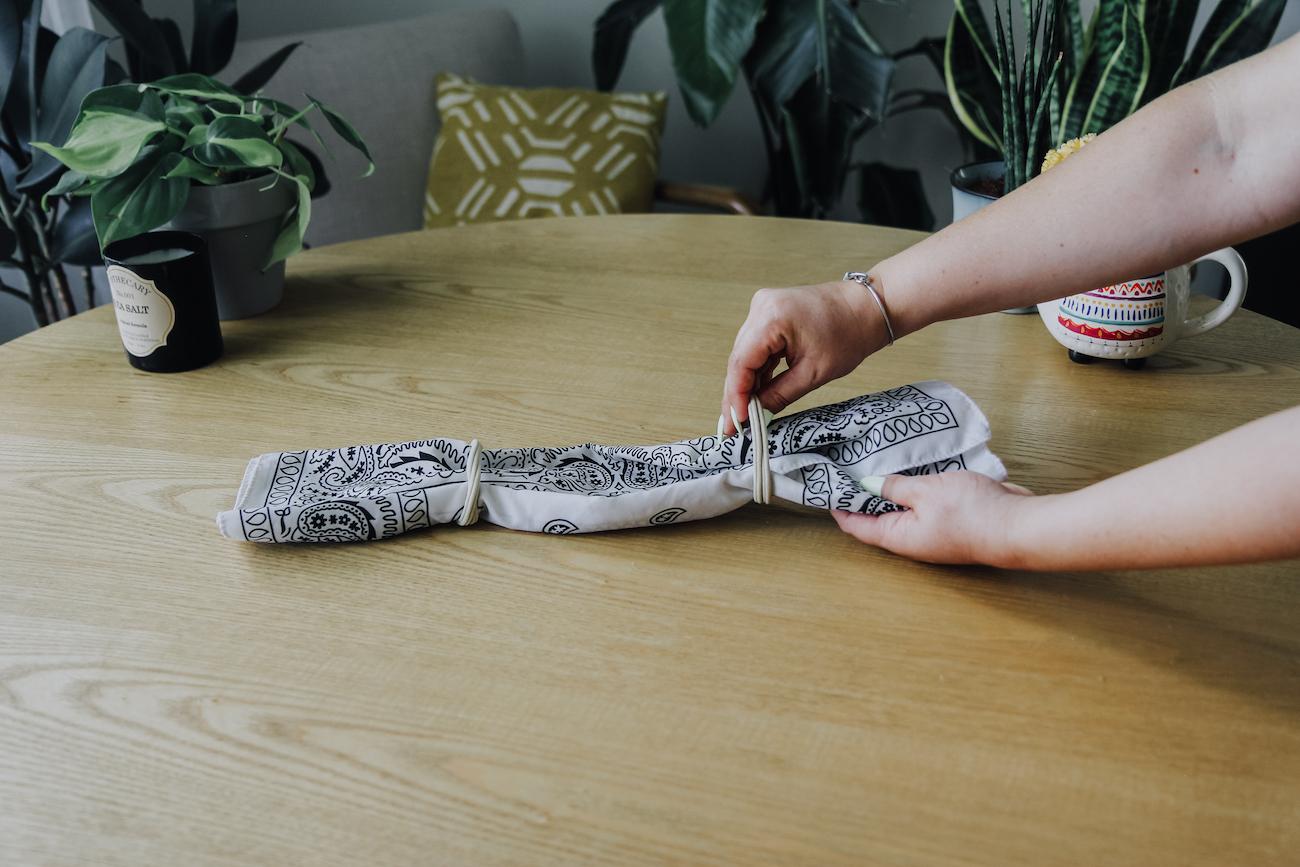
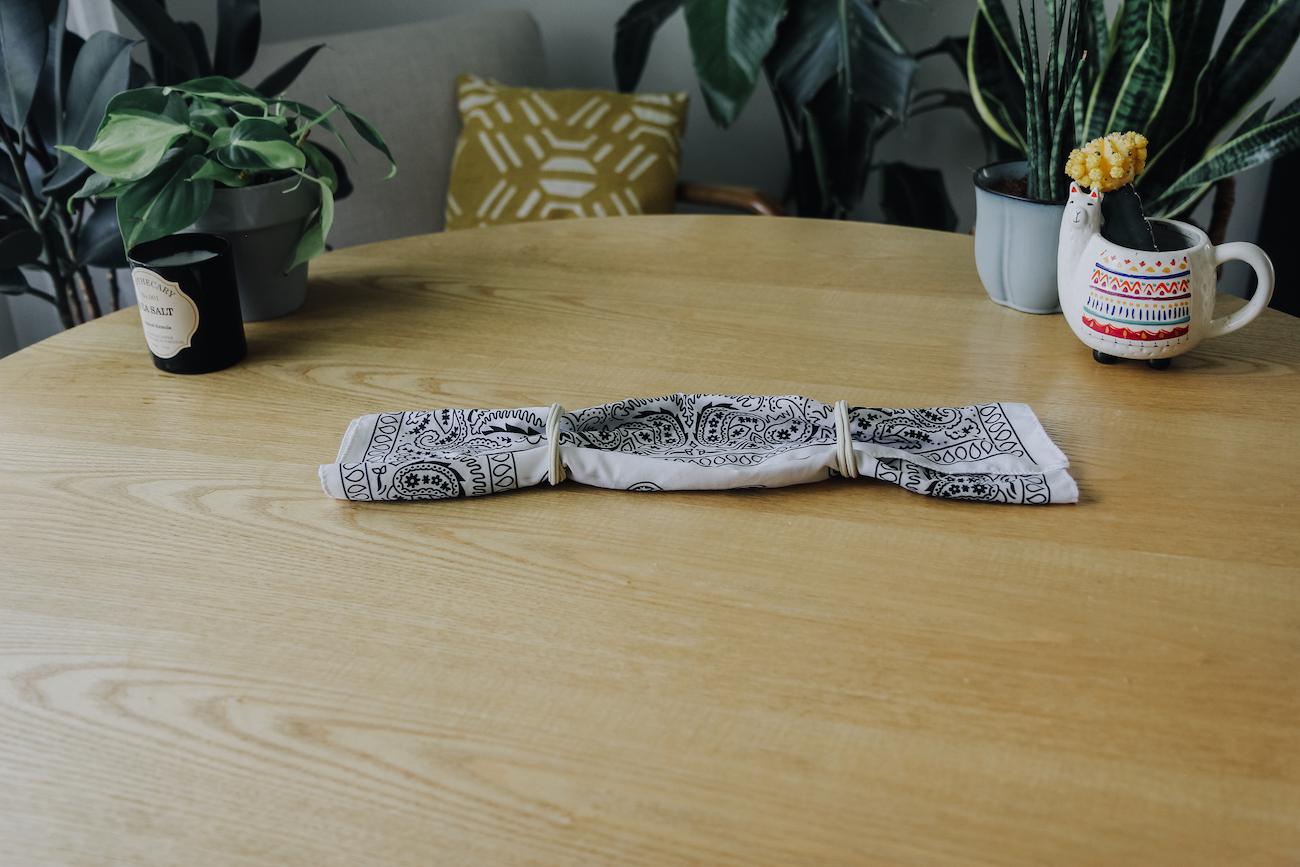
5. Tuck
Fold the fabric on one side inward, letting the elastics denote the outer edges of your mask. Then, tuck the other end of the fabric into the other, like a pocket.
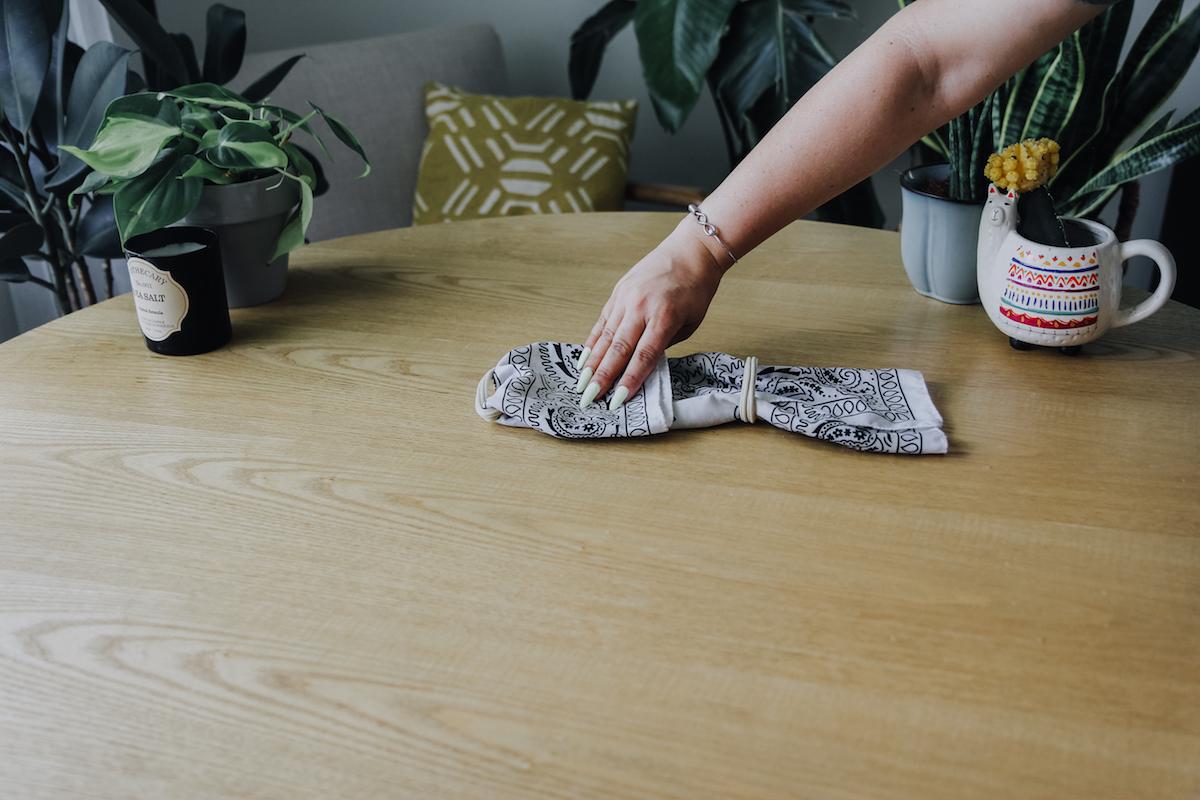
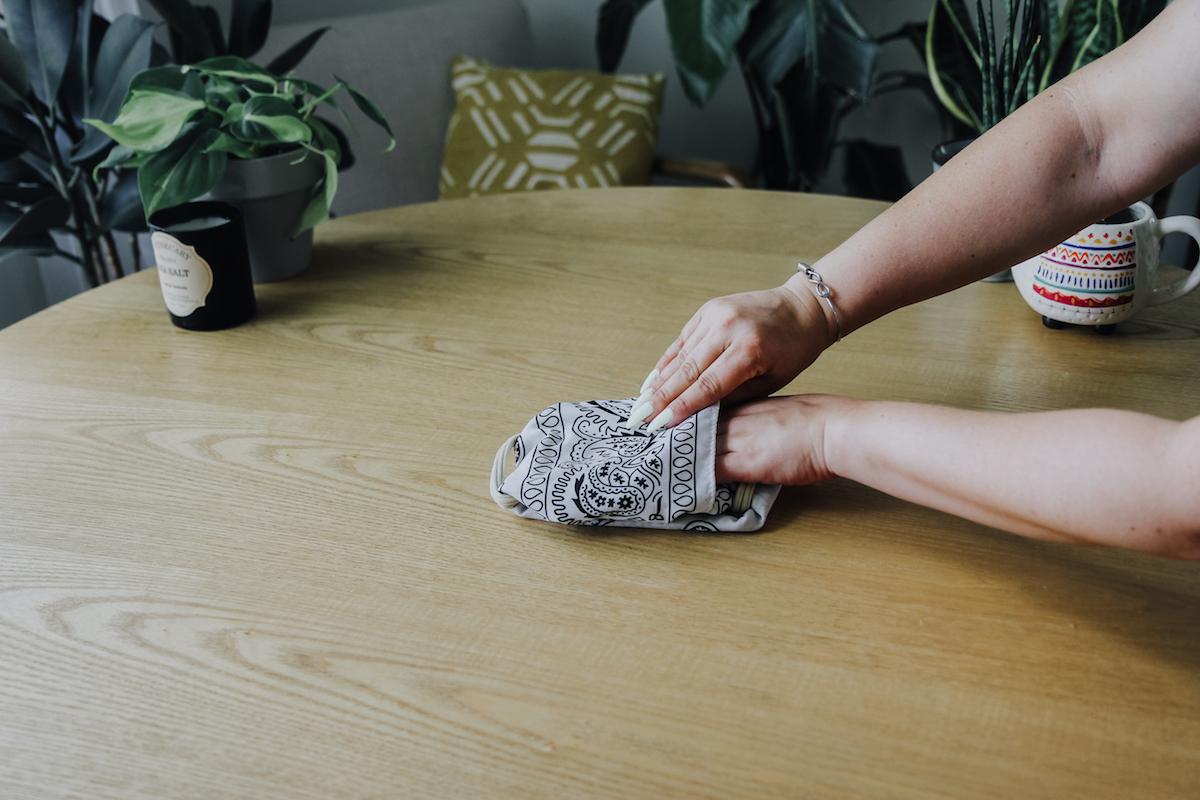
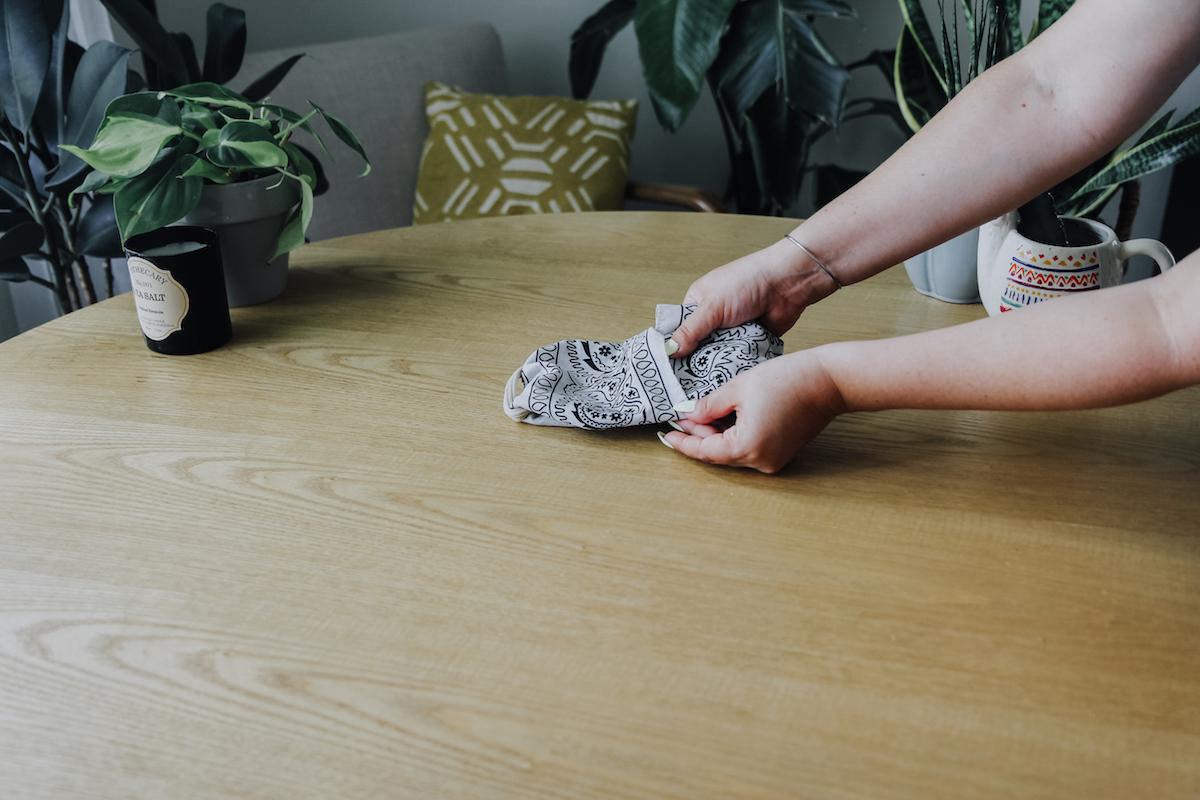
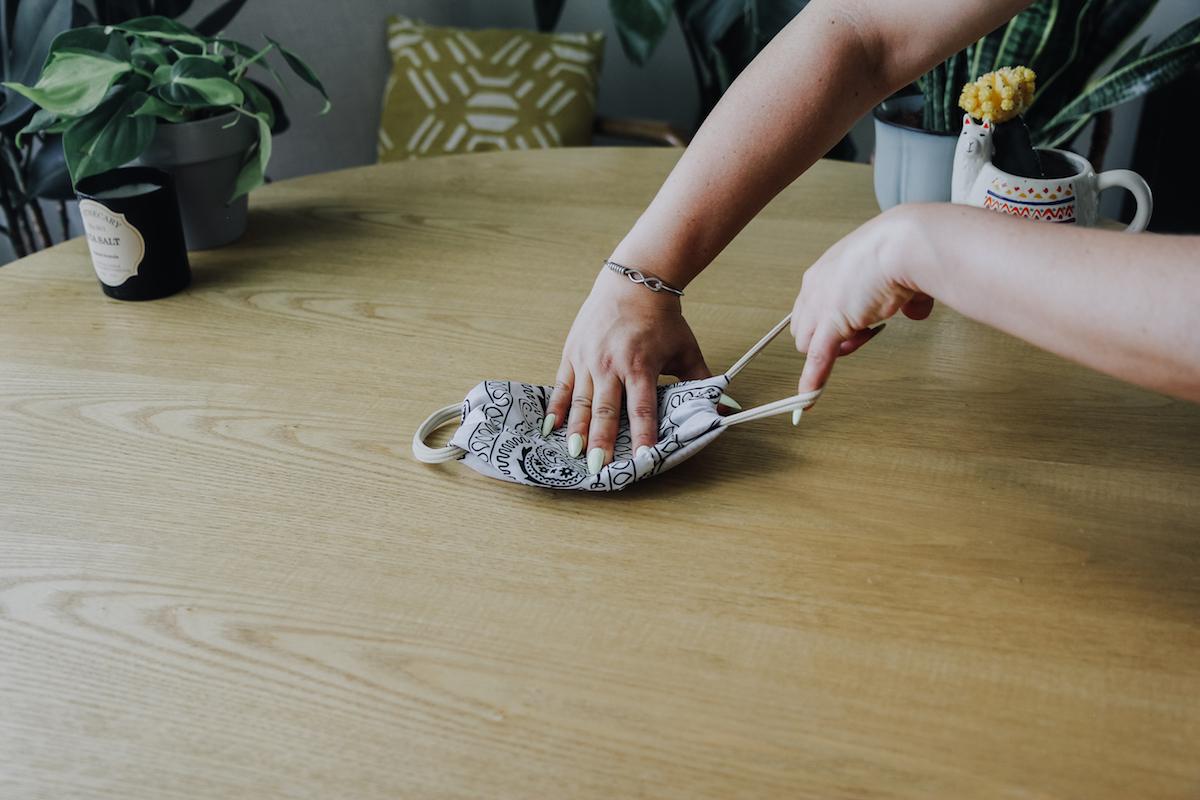
6. Adjust and fit to your face.
It's important that the mask fully covers your nose, mouth, and chin. Also, make sure that it fits comfortably, which will help stop you from adjusting or touching the mask while you wear it.
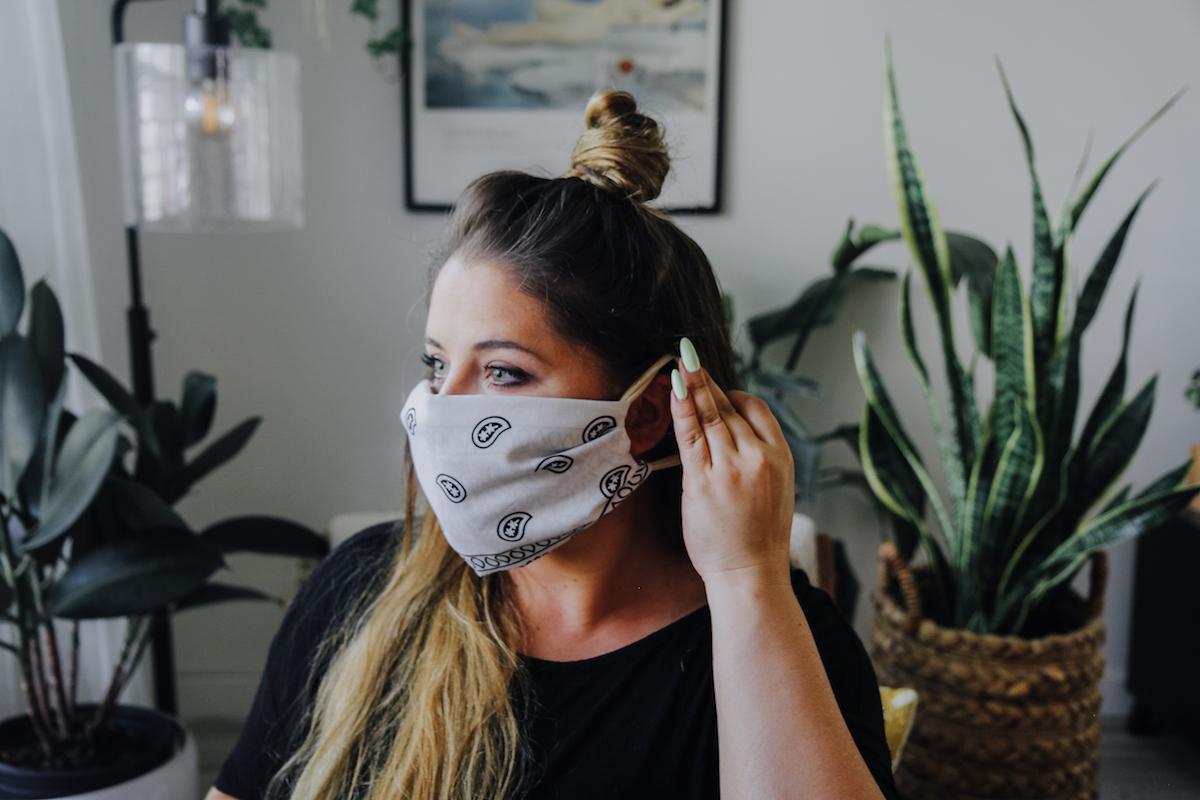
N95 masks vs. surgical masks vs. cloth masks:
Of course, N95 masks, which filter out at least 95 percent of teeny-tiny 0.3-micron particles, are the most effective — however, there is a shortage of N95 masks, and the ones available should be saved for health care providers, other frontline workers, and high-risk individuals (such as the elderly and the immunocompromised) during the pandemic.
According to Segal via MarketWatch, surgical masks filter out about 65 percent of particles.
The amount of particles that cloth masks filter out greatly varies. It depends on the fabric used, how many layers it has, and if it includes a filter of some sort. Segal found that can masks made from quilter’s cotton can filter out up to 79 percent of particles (but his findings have yet to be peer-reviewed), according to MarketWatch. However, thin fabric could filter out as little as 1 percent of particles, Dr. Segal told The New York Times.
Here’s why experts recommend wearing cloth face masks.
To learn more about why the CDC is recommending cloth face masks, we spoke with Dr. Eudene Harry, a board-certified physician in Emergency Medicine and Holistic Integrative Medicine, and Medical Director for the Oasis Wellness & Rejuvenation Center in Orlando.
“Many individuals with the virus have mild symptoms and some may show little or no symptoms at all,” Dr. Harry tells Green Matters in an email. “These individuals may pass on the virus unknowingly. If these individuals cough or sneeze unexpectedly, these respiratory droplets may come in contact with another person thus spreading the virus. Wearing a cloth mask may help to reduce the risk of that happening.”
Will cloth face masks protect us from the coronavirus?
“[Cloth] masks, in my opinion, are designed for us to protect each other,” Dr. Harry says. “We still should wash our hands judiciously, avoid touching our face, and practice social distancing.”
It’s important to make sure your DIY cloth mask is secure and comfortable, because the last thing you should do is touch your mask while wearing it in public or around others.
“If you touch a contaminated surface and touch your mask or are exposed to large amounts of virus from an infected person, you could still contract the virus,” Dr. Harry explains. “If you wear a mask, don’t let your guard down and believe that you are now completely protected. Without the other safety precautions, the mask may not be as good as you think.”
The best way to prevent contracting or spreading coronavirus is with thorough hand washing and social distancing. If you feel you may be experiencing symptoms of coronavirus, which include persistent cough (usually dry), fever, shortness of breath, and fatigue, please call your doctor before going to get tested. For comprehensive resources and updates, visit the CDC website. If you are experiencing anxiety about the virus, seek out mental health support from your provider or visit NAMI.org.